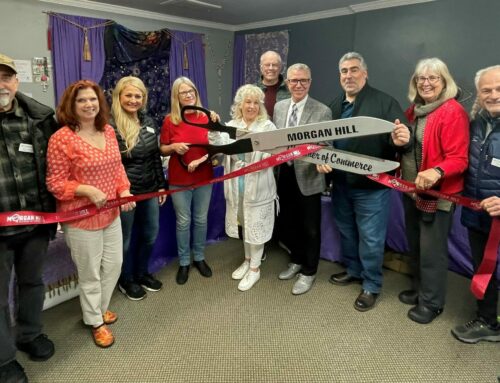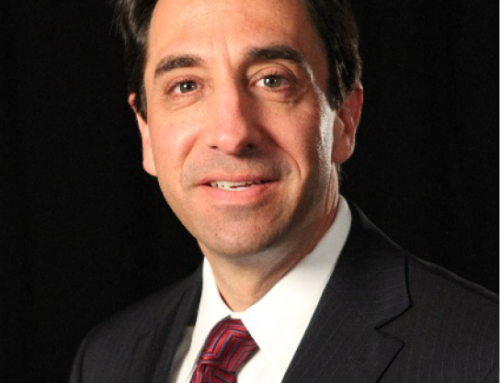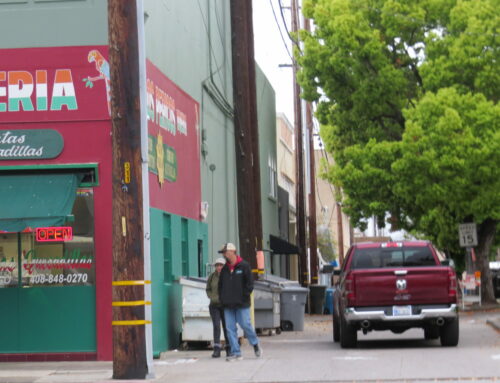Published in the April 13-26, 2016 issue of Morgan Hill Life
City replacing water well on East Dunne Avenue
Wonder what’s going on along the creek near the corner of Hill Road and East Dunne Avenue on the east side of Morgan Hill with that two-story rig and the temporary canvas wall? Here’s the scoop from David Gittleson, associate engineer with the city of Morgan Hill:
“The city is drilling a replacement water municipal well as the existing well is old and not very productive. The large screening is a noise absorbing curtain, only there for the drilling work, then it will be removed. This is a 24-hour-a-day operation,” he said.
Maggiora Bros. Drilling, Inc., based in Watsonville and Hollister, was contracted to do the digging. The current Jackson Oaks Well was put into service in 1927 and has outlived its expected service life. Due in large part to its age, its water production rate has dropped during the past years and now must be replaced. The new well is expected to increase water production to 800 gallons per minute. The existing building at the location will be upgraded to include a new well pump, new electrical control panel and other improvements to meet current safety standards and improve efficiencies and reliability.
Grant helps riding program purchase pen for horses

One Step Closer provides equine assisted therapy to about 20 veterans a week year round. It works in partnership with the Veterans Affairs Palo Alto Health Care System. The horsemanship curriculum is designed to improve the participants’ emotional, cognitive, and physical well-being through purposeful participation in therapeutic equestrian activities.
One of the participants, a U.S. Army veteran, said, “Here veterans learn or relearn the value of communication, partnership and the power of connecting with another special living creature. It provides veterans with the opportunity to find a way to reconnect to the world.”
The local Rotary Club has generously supported OSC over the years, OSC Executive Director Mark Keirstead said.
“Our wheelchair ramp, bleachers, and viewing deck were all funded by Rotary Club grants,” he said. “Now this round pen is installed, and we are deeply grateful for their support.”
Water district aims to replenish groundwater basin
March rainstorms brought much needed relief to Santa Clara County’s reservoirs; so much that four of our 10 local reservoirs reached their capacity. After four years of historic drought conditions, this is an encouraging sign. In late March, the Santa Clara Valley Water District said, total combined reservoir storage was about 68 percent full, slightly above normal compared to the 20-year average.
While these numbers are encouraging, there is another fundamental source of water that is often overlooked — groundwater. Local groundwater levels have taken a hit during the drought. Water that is stored underground provides almost half of the water used in Santa Clara County every year. In times of drought, when local and state reservoirs are low, residents and businesses such as farm rely more heavily on groundwater.
Due to limited surface water supplies in the last four years, the county has had just a fraction of the amount of water that we normally use to replenish groundwater supplies. That’s why most of the SCVWD’s groundwater percolations ponds have been dry since 2014.
This year, the water district will be able to use runoff captured in reservoirs and the increased availability of imported water to fill those ponds and creeks so the groundwater basins can begin to rebound.
“Even with four spilling reservoirs, it could take years to bring our groundwater levels back to normal,” said SCVWD board member John Varela. “The Sierra snowpack is still below normal at 86 percent, and our allocations from state and federal projects are expected to be less than normal. We need to keep our conservation efforts going strong. No one knows whether next year or the year after that will be dry.”
– By staff reports






